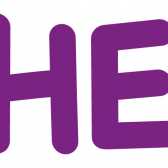Nurse Facilitated Discharge in Pediatric Inpatient Medicine

Summary
The goal of the ACPF was to better define a nurse's roles and responsibilities in discharging patients who meet a
standardized set of criteria for Bronchiolitis and Asthma. By utilizing the knowledge from current evidence supporting nurse facilitated discharges, the hope was to change practice and empower nurses to further develop their roles as leaders within the multidisciplinary health care team.
• By bridging this gap between knowledge and application of discharge criteria, patients will receive consistent care in a timelier manner and get discharged from hospital quicker.
• Although the focus of the fellowship was on nursing, there were identifiable outcomes for physicians as well. From that perspective, success was evaluated by LOS and readmission rate statistics and an ability of the physicians to better predict expected date and time of discharge for patients. Statistics for nursing were evaluated related to workload, patient/family/nursing satisfaction and overall impact that the project provided for nursing autonomy.
• These outcome indicators have the potential of impacting nursing as a profession and advancing the overall care of patients and their families while achieving it
The overall goal of the project was to better define a nurse's roles and responsibilities in discharging patients who meet a standardized set of criteria for Bronchiolitis and Asthma. My specific goal of the project was be to learn how to effectively take current evidence supporting nurse led discharges and translate it into practice. This fellowship put me in a position to empower and support nurses to further develop their roles as leaders within the multidisciplinary health care team and effect change in Nursing. Although we were only able to advance the criteria for Bronchiolitis into Epic, we have received the approval of our "Eezy Wheezy" Discharge Criteria for Asthma. Staff have been very pleased with the project and with ongoing in-time education and support provided by me. They feel empowered to provide care and identify patients ready for discharge. The team is very optimistic about the future of this project.
Outcomes
Family satisfaction surveys showed an appreciation in the speed in which patients are discharged home after the medical readiness for discharge criteria is flagged. Data was collected via the paper version of the initiative prior to building or launching an electronic version to ensure the initiative met the needs of families at CHEO. When the initiative was moved forward from paper to Epic (our electronic charting system), it increased our ability to "flag" patients that met our medical readiness for discharge in our Bronchiolitis population and thus continued to increase our satisfaction among families at CHEO and staff utilizing the improved tools.
I believe that had I not been given this fellowship, we would not be as far along into the project. Because of this fellowship, we were able to dedicate time and effort to advance the Nurse Facilitated Discharge Project into our electronic documentation system which was a huge step forward. Time was dedicated to educating nurses and empowering them to be the leaders going forward. Next steps include continuing to progress to a fully automated Nurse Facilitated Discharge process for Bronchiolitis and continue on to the future diagnoses of Asthma and Rule-Out Sepsis. The current plan is to have Nurse Facilitated auto-discharge for Bronchiolitis in the 2021/2022 respiratory season and the implementation of an electronic "Eezy Wheezy" Medical Discharge Criteria for Asthma within the same season. CHEO's Division of Pediatrics is very excited about the future of this project as it has positively impacted the entire multidisciplinary team and the patients and families admitted to CHEO with Bronchiolitis
Overall experience
I would like to express my gratitude to the RNAO for allowing me to complete this Advanced Clinical Practice Fellowship in Nurse Facilitated Discharge, this has been an exciting project to develop and grow. A particularly special thank you goes out to my primary mentor, Martha Pinheiro-Maltez, for her unwavering support, encouragement and guidance and to my physician lead, Dr. Melanie Buba, for her hard-work, eagerness and dedication to the success of the project and my partner in all we have accomplished. I feel truly blessed and honoured to have been given this opportunity.
